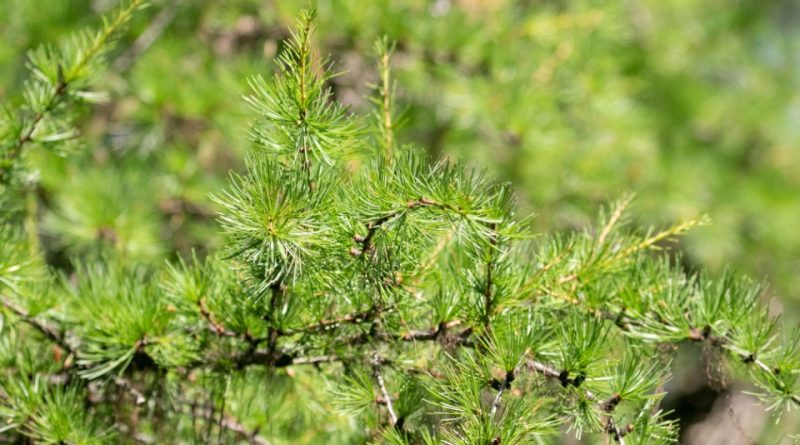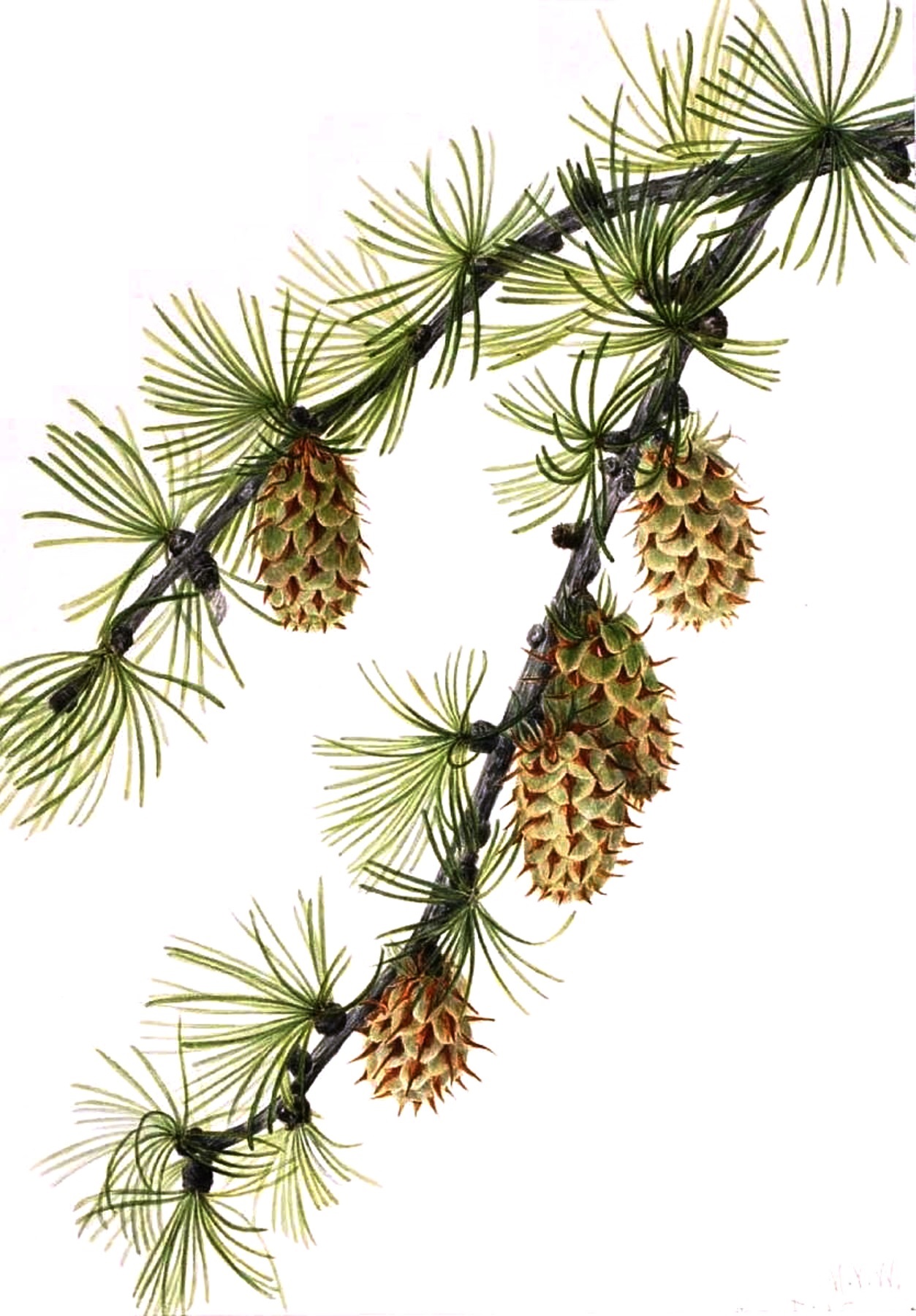Larix occidentalis
Larix occidentalis
The Western Larch (Larix occidentalis Nutt.) Is an arboreal species belonging to the Pinaceae family.
Systematics –
From a systematic point of view it belongs to:
Eukaryota Domain,
Kingdom Plantae,
Pinophyta Division,
Pinopsida class,
Order Pinales,
Pinaceae family,
Genus Larix,
Species L. occidentalis.
The terms are synonymous:
– Larix americana var. brevifolia Carrière;
– Pinus nuttallii Parl ..
Etymology –
The term Larix comes from the Latin name of the larch, assonant with the Greek term λᾶρός láros pleasant, referring to the aroma.
The specific epithet occidentalis, western refers to the distribution area.
Geographic Distribution and Habitat –
Western Larch is a conifer native to the mountains of western North America, both in Canada, in the provinces of British Columbia and Alberta, and in the United States, in the eastern areas of Washington and Oregon, as well as in northern Idaho and west of Montana.
Its habitat is, almost exclusively, in the valley of the Columbia River, from the east of the Cascade Range to the west of the Continental Divide. It covers the regions around Kamloops, British Columbia, Weiser, Idaho, and central Oregon. It is found on ranges including the Blue Mountains and others in southeastern and northwestern Montana, usually on wet slopes up to 1,800m above sea level. It can grow from altitudes between 500 and 2,400 m and is very cold tolerant, able to survive winter temperatures down to around -50 ° C. It grows only on well-drained soils, while it is unable to thrive on waterlogged soils.
This larch is the most productive of the three larch species native to North America.
Description –
Larix occidentalis is a large conifer, which can reach heights between 30 and 60 meters.
The trunk has a diameter sometimes greater than one meter and a half and the crown is almost conical; the main branches start from the ground level, the lateral ones are often hanging.
The shoots, as in all species of the genus Larix, are dimorphic, with a clear differentiation into macroblasts, typically 10-50 cm long and covered by a large number of buds, and 1-2 mm long brachiblasts with a single apical bud .
The leaves are needle-like, light green, 2–5 cm long and very thin; turn yellow in the fall before abscission, leaving the pale orange-brown twigs bare until the following spring.
The cones are cylindrical-ovoid, 2–5 cm long, with 40 or 80 scales, each bearing a 4–8 mm bract. Red when immature, they turn brown over time and the flakes open or fold to release the seeds when ripe, 4 or 6 months after pollination. old cones typically remain on their original branch for several years, turning a very dull gray.
The seeds are an important food source for many birds, most notably Carduelis pinus and Loxia leucoptera.
Cultivation –
Larix occidentalis is a deciduous tree that is also used in its natural state for local use as a food, medicine and source of materials.
It grows in mountain valleys and lower slopes and generally in mixed populations.
For its cultivation it prefers an open and ventilated position in a light or gravelly and well drained soil; plants, in fact, are intolerant to poorly drained soils, but tolerate acidic and sterile soils.
It also prefers northern or eastern exposures and also grows on slopes, even rocky or mountainous.
It is a very cold-hardy species when fully dormant.
Older trees develop very thick bark, which protects them from forest fires.
It easily hybridizes with other members of the genus.
Propagation occurs by seed. Sowing should be done at the end of winter in pots in an unheated greenhouse. Cold stratification of a month helps germination, in addition it is better to give the seedlings a light shade for the first year.
The young seedlings, as soon as they are manageable, should be placed in single pots and grown for the first winter in an area protected from the cold.
The transplant must be done in the second year in the summer. The seed remains viable for 3 years.
Customs and Traditions –
Larix occidentalis is a conifer that with its thick bark, non-flammable foliage and protective cones is very resistant to fire.
Indigenous peoples applied the resinous gum of this conifer on wounds and chewed it to treat sore throats. Some also ate the change and sap; in particular it was the Kutenai and Salish peoples of Montana who gathered the sap. A medicinal tea was made from the bark or foliage. Some highland Indian tribes drank an infusion from the young shoots to treat tuberculosis and laryngitis.
The sweetish galactan of the lymph can be transformed into yeast and medicinal. A tree extract is sold as a health supplement. Water-soluble arabinogalactan is used in foods, medicines, inks and paints.
Western larch is used for the production of Venice turpentine.
From an ecological point of view it is reported that the capercaillie uses the leaves and buds of the tree. The seeds are an important winter food substitute for some birds, notably the pine siskin but also the redpoll and white-winged spider. This often happens during times when other conifer cones that are a more preferred diet are in short supply. Woodpeckers use heart rot from older specimens to create openings, which are used by various small animals.
In 2010, the British Columbia government implemented an assisted migration program of western larch to a new habitat in northern British Columbia, approximately 1,000 kilometers north of its current range. Assisted migration of Canadian forests has been proposed as an adaptation measure in response to climate change. In fact, with the increase in average temperatures, the optimal climatic conditions for tree species are also moving north. Research has shown that western larch trees have no problem growing in the north, an area whose climatic conditions should correspond to the historical range of western larch by 2030.
The bark of this plant contains tannin and the wood is hard, strong, very heavy, very durable in contact with the ground.
The tree produces long, straight trunks without knots and is a very important commercial crop in its native range.
It is used for poles, cabinet making, construction, plywood, etc., and is an excellent fuel.
In general, the wood produced by this species is resistant and durable, but also flexible when reduced to thin sheets, and is particularly sought after for the construction of yachts; the wood used for this purpose must be knot-free, and can therefore only be obtained from particularly old trees pruned at a young age in order to remove low branches. Western larch wood is highly valued as a fuel in the Pacific Northeast; its combustion produces an excellent perfume as well as a characteristic crackle.
Preparation Method –
Larix occidentalis is a plant that is used for food, medicine and for the use of resins and wood.
A gum, or resin, is produced under the bark. It is a substitute for gum arabic, very soluble in water, and is used as a thickener, stabilizer, emulsifier and for chewing. This oozes from the trunk and branches but commercially it is usually obtained by extraction from wood chips as a by-product of the timber industry.
The sap can be collected in spring and, once concentrated by evaporating much of the water, it is transformed into a sweet syrup.
For medicinal use, rubber is used which is obtained under the bark and used as a dressing in the treatment of cuts and bruises.
An infusion of the bark has been used in the treatment of coughs, colds and tuberculosis.
A decoction was used to wash the wounds and sores.
The lymph was chewed in the treatment of sore throat.
The leaves and stems are antirheumatic, antiseptic, aperitif and purifying of the blood.
A decoction has been used both internally and externally in the treatment of cancer and is said to help an emaciated patient get better and gain weight.
A decoction, obtained, from the tips of the stems was taken internally and also used as a soak on the limbs, with the presence of arthritis and as a wash for cuts and sores.
Among other uses, a red powder is obtained which can be produced by heating the resin and then grinding it. This powder was mixed with fat and used as a cosmetic, or mixed with poplar balsam buds (Populus spp.) And used as a paint.
Guido Bissanti
Sources
– Acta Plantarum – Flora of the Italian Regions.
– Wikipedia, the free encyclopedia.
– GBIF, the Global Biodiversity Information Facility.
– Useful Tropical Plants Database.
– Conti F., Abbate G., Alessandrini A., Blasi C. (ed.), 2005. An annotated checklist of the Italian vascular flora, Palombi Editore.
– Pignatti S., 1982. Flora of Italy, Edagricole, Bologna.
– Treben M., 2000. Health from the Lord’s Pharmacy, Advice and experiences with medicinal herbs, Ennsthaler Editore.
Photo source:
– https://inaturalist-open-data.s3.amazonaws.com/photos/144473385/original.jpg
Warning: Pharmaceutical applications and alimurgical uses are indicated for informational purposes only, they do not represent in any way a medical prescription; therefore no responsibility is taken for their use for curative, aesthetic or food purposes.


